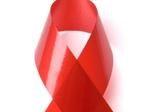HIV infection rates are predicted to rise by up to 75 percent in parts of Australia in the next seven years if the current trends continue, according to University of New South Wales (UNSW) researchers, based at the National Centre in HIV Epidemiology and Clinical Research (NCHECR).
Mathematical modelling amongst gay men shows that HIV infection will increase by the greatest rate in Victoria - by 73.5 percent by 2015. There will be a moderate increase in Queensland with infections up by almost 20 percent in the same time. In contrast, the number of new cases in New South Wales is predicted to decrease. As the observed increase in HIV has been primarily in the male homosexual populations, the report focuses on men who have sex with men.
"While the raw numbers are not as large as they were at the peak of the HIV/AIDS crisis in 1988, this is a worrying trend," said lead investigator of the report and HIV mathematical modelling expert Dr David Wilson from NCHECR. "Most new infections are happening in these three States.
"We had reduced levels of condom use at short odds for explaining the increasing trends and differences between States. But all bets were off when we found that condom usage could not explain the full extent of the increase and other explanations had to be sought," said Dr Wilson. "Indeed, the increases could not be reproduced by combining the direct effects of declining condom use, with changes in numbers of sexual partners, disclosure of HIV status to partners, HIV testing rates and rates of early antiretroviral treatment."
The NCHECR report found that the observed trends in HIV notifications could only be reproduced by a factor that increased the susceptibility of HIV transmission in male homosexual intercourse. Other sexually transmitted infections (STIs) are known to increase the susceptibility of HIV transmission in heterosexuals. When the same factor was included in the computer model for male homosexual HIV transmission, the observed increases in HIV were able to be reproduced under assumptions consistent with recent rises in other STIs. Notifications for Chlamydia, gonorrhea, and syphilis have increased substantially in Australia in recent years. Herpes is also highly prevalent in the Australian gay population.
"If an HIV positive person has an STI, it is two to five times more likely that they will transmit the virus. On the other side of the equation, there is also a greater likelihood that a person will become HIV positive if they have an STI," said Dr Wilson. "As decreasing condom usage can be expected to lead to more STIs, this factor may be indirectly responsible for explaining the majority of the observed increases in HIV infections," said Dr Wilson.
"This suggests that promoting condom use is likely to be the most effective intervention for interrupting HIV transmission in Australia. Heightened surveillance and targeting of other STIs could also be important and warrants serious consideration," he said.
Another important finding is that almost one-in-five transmissions amongst gay men are attributable to the approximately three percent of men who have been recently infected. This is when the levels of virus are highest in the body. Furthermore, almost one-in-three new infections were estimated to be transmitted by the approximately 13 percent of men who have undiagnosed HIV infection.
The research was conducted in close consultation with a Steering Committee, consisting of national HIV experts of sexual behaviour, clinical practice, epidemiology, infectious diseases, and community and government based organisations.
Contact details: Dr David Wilson, 0421 598 939; Susi Hamilton, UNSW media, 0422 934 024


